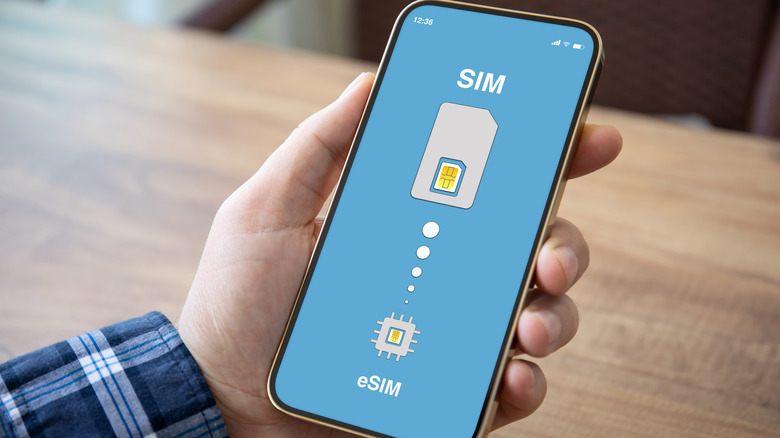In recent years, the telecom industry has witnessed the emergence of eSIM (embedded SIM) technology, which is revolutionizing the way mobile network operators (MNOs) manage and provision subscriber identity. The traditional physical SIM card is being replaced by a smaller, more more versatile chip embedded directly into devices, offering numerous advantages for both consumers and MNOs. In this blog post, we will explore the key aspects of eSIM technology and delve into its implications for MNOs.
What is eSIM Technology?
An eSIM is a digital SIM card that is embedded directly into a device, such as a smartphone, tablet, smartwatch or other Internet of Things (IoT) devices. Unlike traditional SIM cards, which are removable and need to be swapped out when changing networks or devices, an eSIM is integrated into the devices hardware and has the ability to support multiple network operator profiles on a single embedded SIM. This means that a user can have multiple SIM cards or mobile plans programmed onto one eSIM and switch between them as needed.
Implications for MNOs
1. Enhanced Customer Experience
According to a survey conducted by GSMA, it’s estimated that eSIM-capable phones will represent over 40% of global smartphone shipments by 2025. eSIMs enable MNOs to offer seamless onboarding and activation experiences, eliminating the hassle of physical SIM card distribution and activation processes. This improved customer experience can lead to higher customer satisfaction and loyalty. Apple’s most recent iPhones (iPhone 12 & later) support eSIM functionality, enabling users to activate and switch carriers without the need for a physical SIM card.
2. New Revenue Streams
With eSIMs, MNOs can explore new revenue streams by offering temporary or specialized plans for specific use cases. For example, they can use eSIMs to provide global roaming plans by simplifying the process of connecting to different networks while travelling internationally or IoT-specific plans for connected devices.
Deutsche Telekom, one of Europe’s leading mobile operators, as well as AT&T, Verizon and T-Mobile actively promote eSIM technology and offer activation services for smartphones, wearables and IoT devices. This flexibility allows users to manage all of their devices under one plan and can attract new customers who want simplified billing and management across multiple devices.
3. Increased Operational Efficiency
eSIM technology reduces the logistical challenges associated with SIM card inventory management, distribution, and replacement. MNOs can remotely provision and manage subscriptions, reducing costs and streamlining operations. Swisscom and Telefonica are just two examples of large telecom players who are utilizing eSIMs to simplify the onboarding process for their customers.
The rise of eSIM technology may also lead to changes in the role and function of physical network operator stores. MNOs may look to shift their focus from selling SIM cards and basic plan activations to more specialized services such as device support, customer consultation and value-add or upsell offerings. MNOs may also look to explore a hybrid approach, combining physical stores with online platforms and self-services options to cater to a wider range of customer needs.
4. Partner Collaborations
eSIMS facilitate partnerships between MNOs and device manufacturers. MNOs can work closely with device makers to ensure compatibility and optimize the user experience, leading to new business opportunities and market differentiation. Google and Samsung are already collaborating with MNOs worldwide to provide seamless activation experiences for their Pixel and Galaxy devices respectively.
5. Expansion into IoT
eSIM technology is a crucial enabler for the rapidly growing IoT ecosystem. According to ABI Research, global shipments of eSIM-based IoT devices will exceed 1 billion units by 2025. MNOs can capitalize on this opportunity by offering tailored connectivity solutions for a wide range of IoT devices, from smart meters to industrial sensors. eSIM technology has the potential to significantly impact the revenue of MNOs in the future, particularly in the context of IoT. eSIMs simplify the process of connecting IoT devices to mobile networks, leading to increased adoption of cellular connectivity and generating additional revenue for MNOs.
eSIM technology will also lead to greater flexibility and scalability in serving IoT deployments and facilitating global connectivity, meaning MNOs have the opportunity to capture a significant portion of IoT-related revenue through eSIM-enabled services.
While eSIM technology offers significant advantages, there are challenges that MNOs need to address. These include ensuring interoperability across different devices and networks, addressing security concerns, and educating consumers about the benefits and usage of eSIMs.
The emergence of eSIM technology is reshaping the telecom landscape, offering a more flexible and efficient approach to managing subscriber identity. MNOs need to embrace this technology and leverage its potential to enhance customer experiences, drive new revenue streams, and unlock opportunities in the evolving IoT landscape. As eSIM adoption continues to grow, MNOs that embrace this technology will be well positioned to thrive in the digital era.
To learn more about the topics covered in this article, or to learn more about Openmind Networks, please get in touch at sales@openmindnetworks.com or contact our team of experts here.

